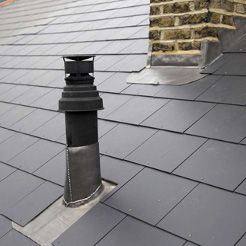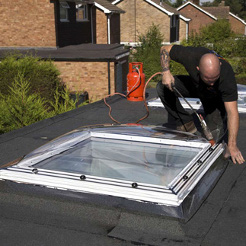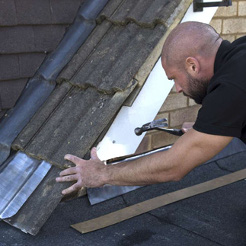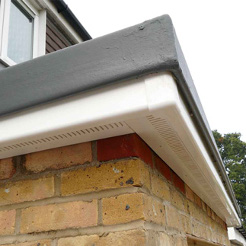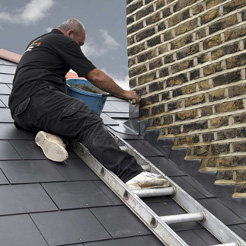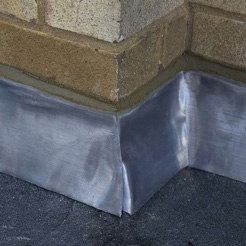When building or renovating, whether it’s your home, a garage, or an extension, you will have to make a decision fairly early on about what type of roof you want to include in your design. There are two main types of roofs: flat roofs and pitched roofs. Both have benefits and disadvantages and to help you decide we have put together an easy-to-use guide on what those are:
Flat roofs – the benefits
Typically used for smaller surface areas such as garages or extensions, but can also be used for larger ones too, such as your main house. Although they are flat and are designed to hold some water on the surface, they will have a small pitch at the ends to make sure it runs off and does not add too much weight to your roof. 20+ Years ago, a flat roof would have been typically finished using an Asphalt material, but due to progression, there are now many competitors. The main competitors are; high performance bituminous felts, GRP (fibreglass), and EPDM (rubber membrane). Materials are forever improving, therefore being supported by better guarantees. Flat roofs are usually a cheaper alternative to pitched roofs as there is less material and labour involved within the build of the roof structure, plus the speed in which a flat roof can be laid. This is one of the main reasons for making them popular for those smaller structures like home extensions and garages. You can also create an outdoor space such as a terrace on a flat roof, adding value to your home and your life.
Flat roofs – the disadvantages
Known to have a shorter lifespan than pitched roofs, generally 10-15 years but this is always climbing depending on the material used and the quality of installation. The structure is key within the flat roof; although they are known as flat roofs, you must ensure you roof has an adequate fall and has the correct support, otherwise dips within the roof will occur, which means possible weak points for a potential leak. The construction of the flat roof can also mean no storage space above ceiling level, unless this is taken into consideration.
Pitched roofs – the benefits
The more common type of roof for a residential property is a pitched roof. A huge benefit for many homes is the ability to convert the space just below the roof into a useable room with a loft conversion. This can add further value to your home and give you more space such as an extra bedroom, a home office, a play area, or just additional storage space if you are short of it. Pitched roofs also have a longer lifespan than flat roofs, due to more durable and weather-proof materials. You can buy various types of colours and finishes for your pitched roof, generally you get concrete / clay tiles, or, natural / man-made slates. Like flat roofs, the quality of installation is still key to the life span of the roof.
Pitched roofs – the disadvantages
With a longer lifespan and more complex labour involved, pitched roofs are more expensive to install. The additional weight necessary to support a pitched roof could also mean more sturdy foundations, so if you were considering replacing a flat roof with a pitched one, it may not be easy to do. Always seek advice from the qualified engineers when changing / adding weight to parts of you home.
For advice on choosing the right roof for your property, or if you are looking for some help with maintenance of either a flat or pitched roof, this is what we’re here for at Roof Rescue. Just give us a call on 020 3189 1618 – we’d be happy to help!

